Heritage works on Hertfordshire historic house

We were invited to survey Solesbridge House – a beautiful Grade II listed building in a semi-rural location in Chorleywood, Hertfordshire.
Constructed in early 17th century the family home as it stands today was originally 3 cottages set within woodlands that we believe formed part of the Chorleywood House Estate.
The internal walls of the house presented moisture staining and spoiling to the original lime plaster finishes along with patch repairs made with a hard cement render.
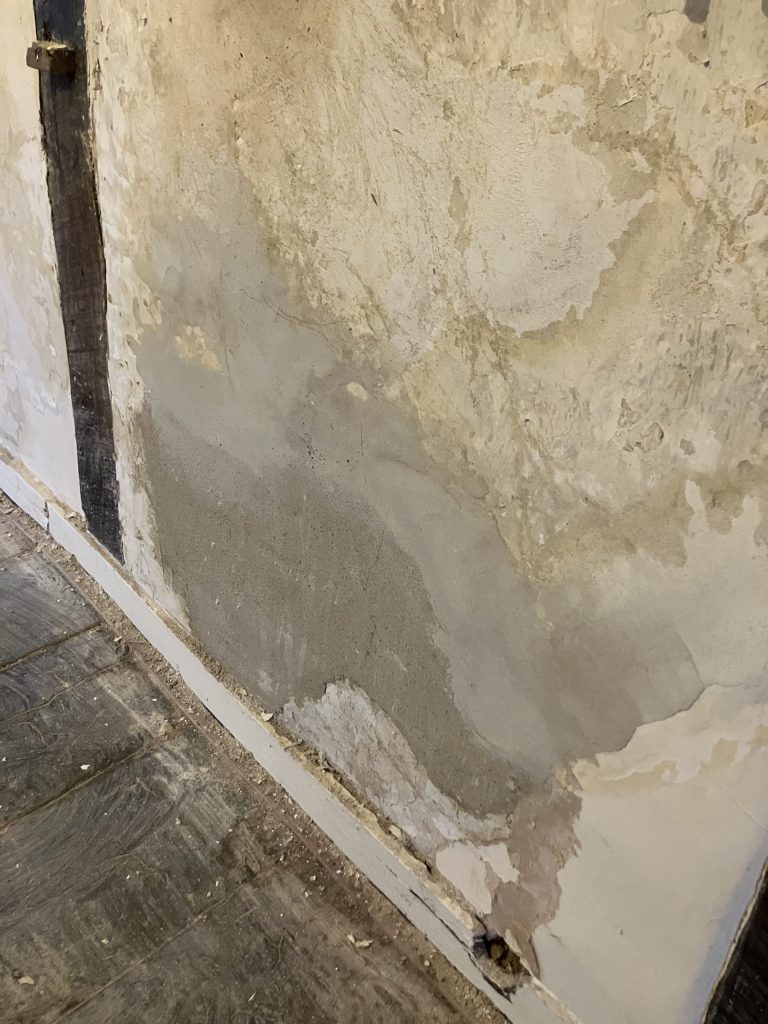
Given the age of the property an original damp proof course was not expected to be present.
Further exposure revealed this to be true. It is important to note however, that the absence of an original DPC does not mean that rising damp will automatically occur!
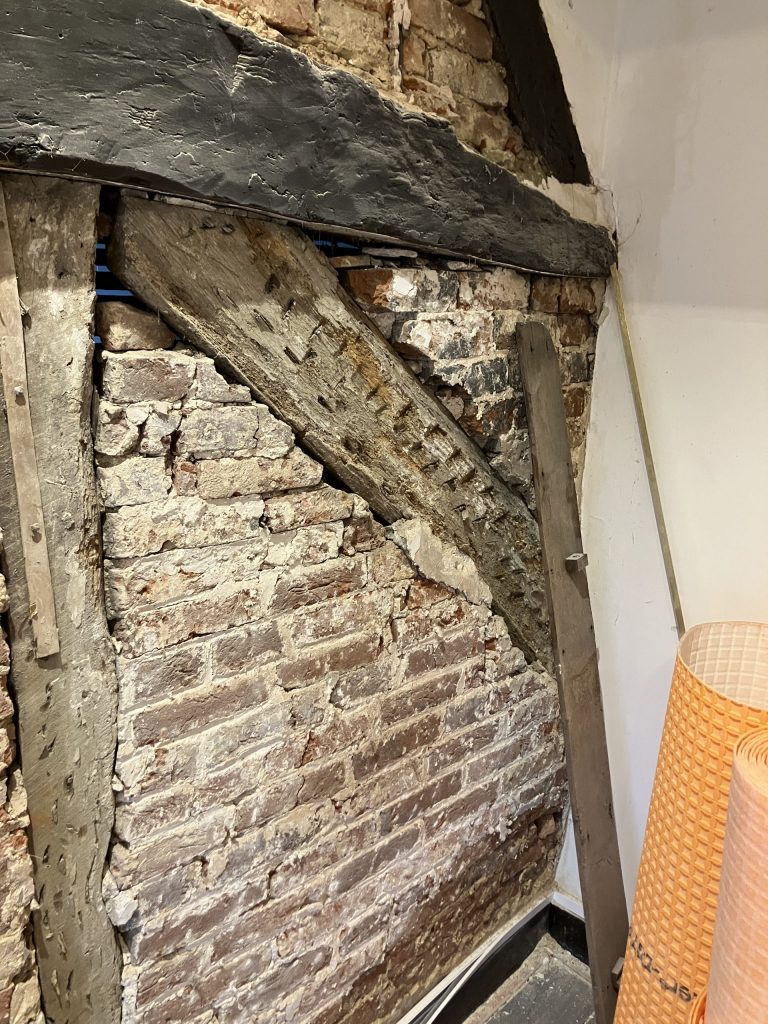
The external ground levels were found to be higher than the internal floor levels. We suspected this to be the main cause of the dampness. Lowering the external ground levels by installing a French drain around the perimeter would be an effective first step in gaining control of the damp issues.
What lies beneath…
Upon exposing the internal substrate, we found tree branches in a sort of lathe and plaster formation. Given the state of the wall finishes and the decayed tree branches beneath, we were unable to retain this quirky feature. Thermal boarding once again provided a contemporary option for a dry lining which not only results in a dry non spoiling surface but also increases the thermal value of the external walls.
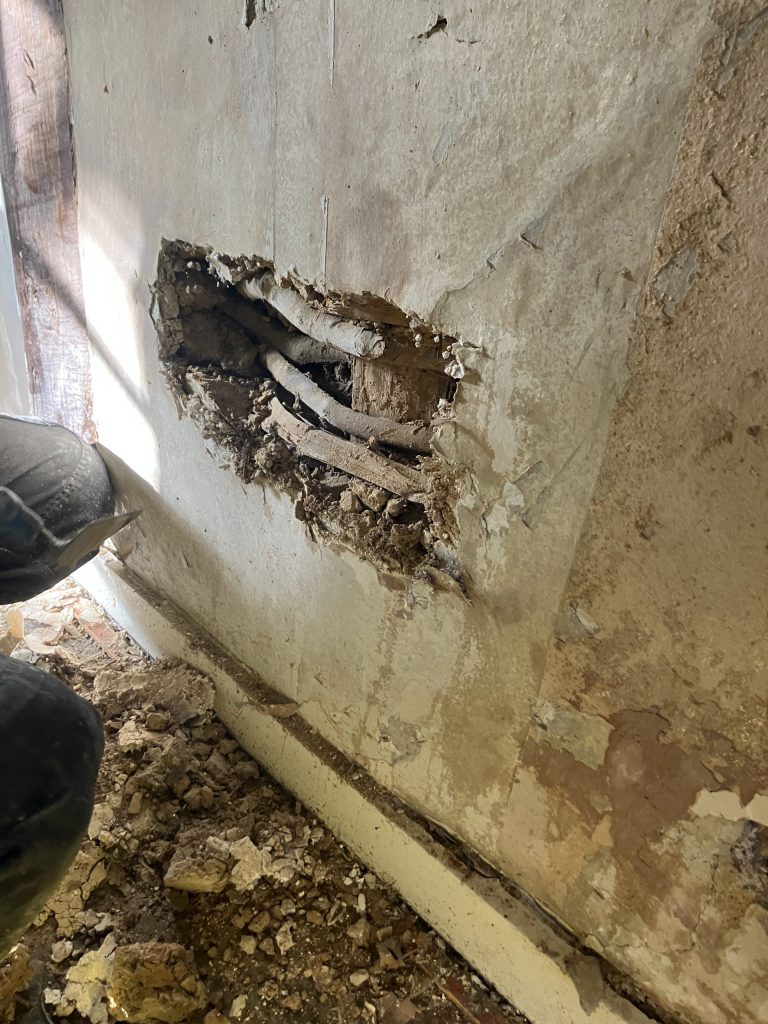
A different approach…
After applying a scratch coat to the walls we noticed that the lime plaster was not drying out despite the fact that we had taken measures to relieve the high external ground levels.

Irregularities such as this demand a more imaginative approach: By digging a channel in the internal solid floor at the floor/wall junction we were able to insert a physical slate damp proof course. This would prevent the channelling of any more moisture from the ground towick up into the walls, while also protecting against future issues of rising damp should they ever occur due to geographical changes.
Next we needed to promote rapid drying of the substrate. This was achieved by the use of infra-red thermal lamps and increased ventilation. Monitoring of the wall took place during this drying period and we were eventually able to accomplish a reduction in wood moisture equivalent readings to within tolerable levels in both the brick work and also the embedded timbers.
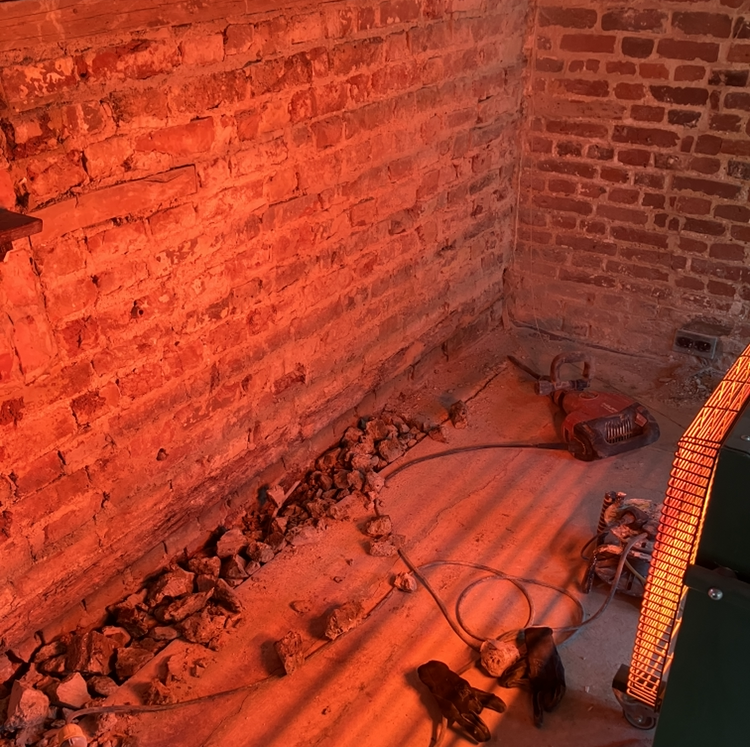
Prior to backfilling and re-screeding the internal channel, we felt it prudent to line the bottom of the wall with a section of thermal panel which would act as a barrier to prevent cold bridging.
With the walls now drying out, we were comfortable with applying a rough cast goat’s hair lime render, maintaining both breathability and accenting one the house’s original features within the finish.
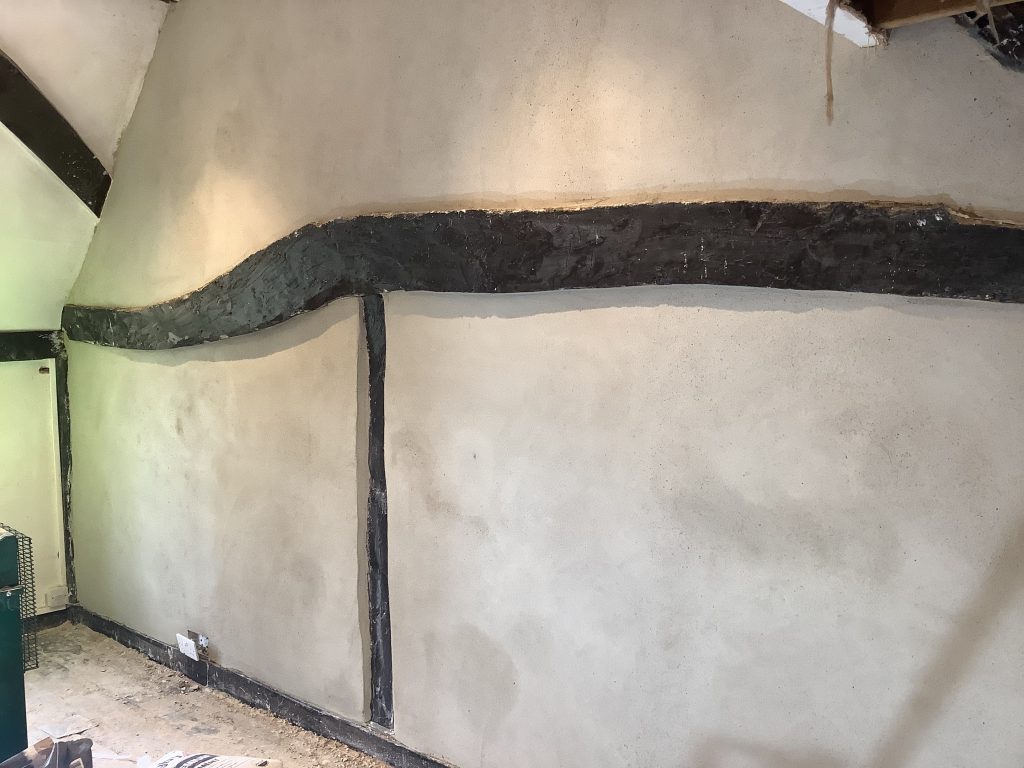
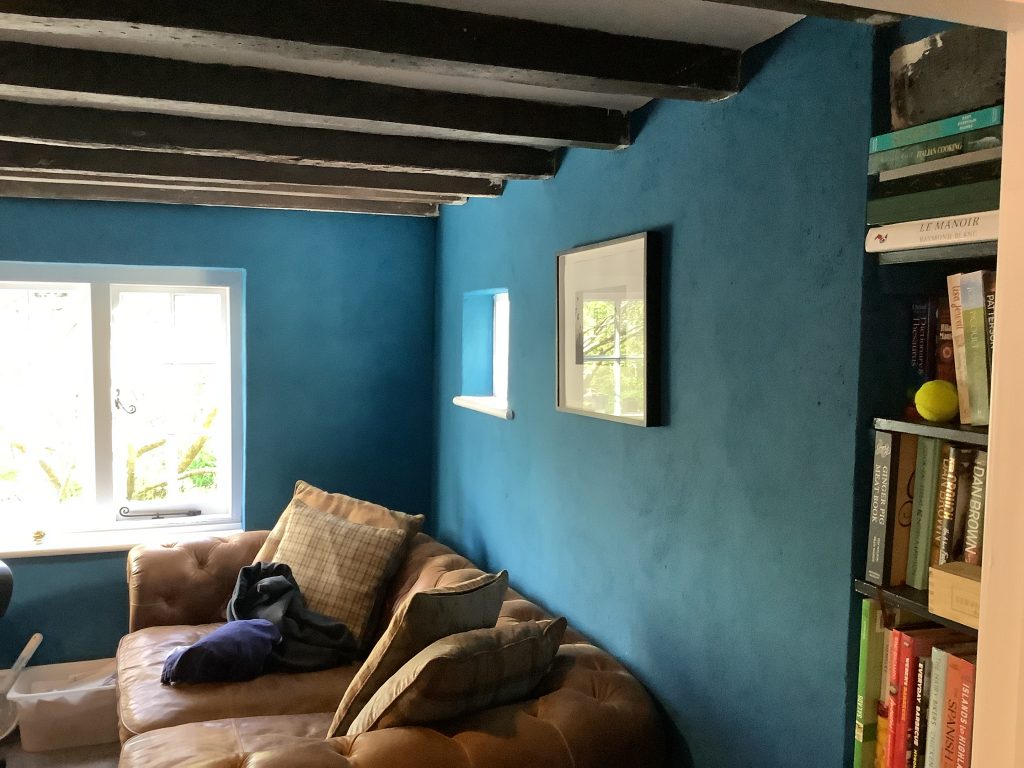
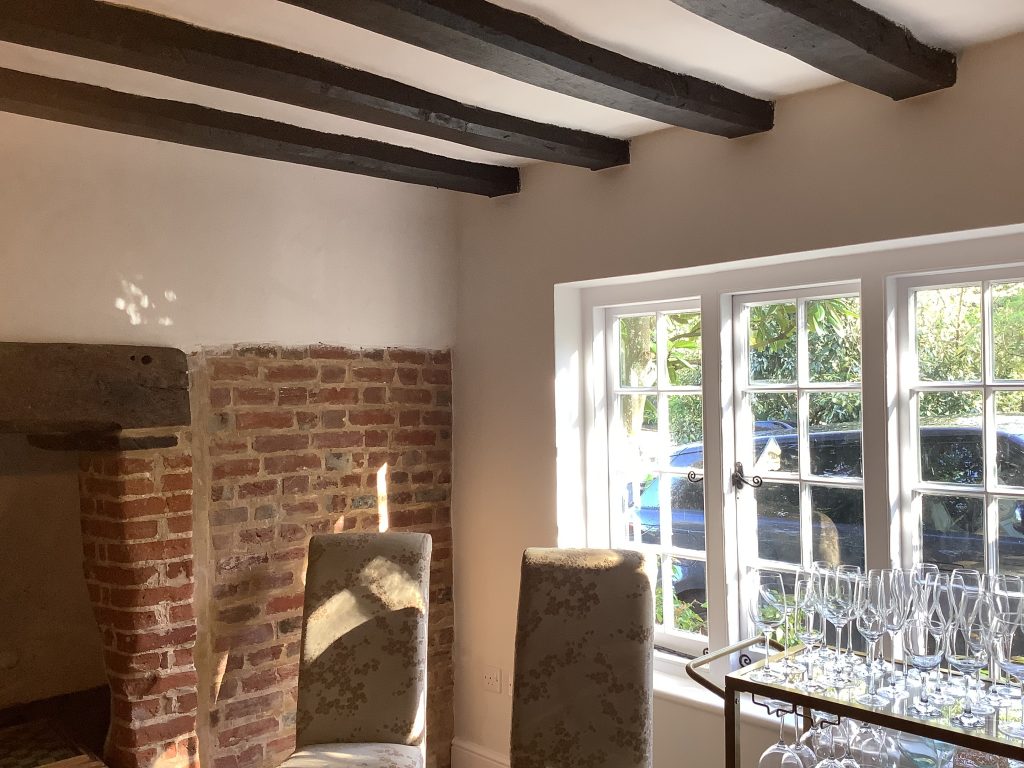
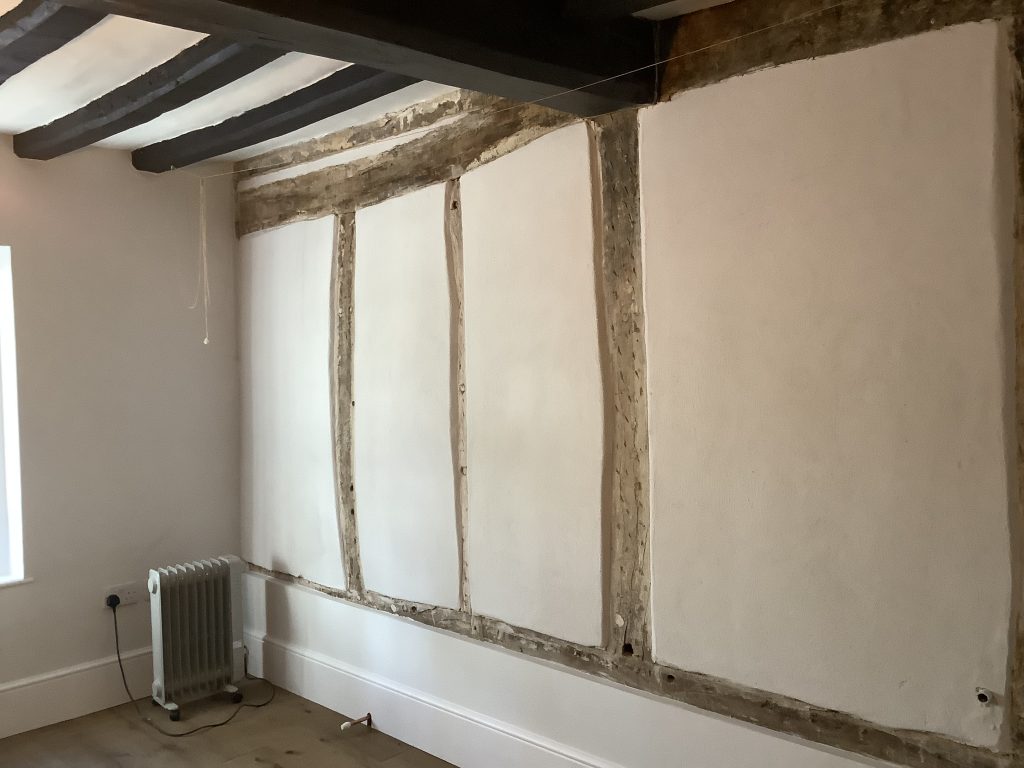
Readers of our previous blog posts will know that Avant Garde are often reluctant to use chemical DPC injections within traditional buildings. We are therefore particularly pleased with this case study, as it provided us with the opportunity to use the Arbortech masonry cutting tool which allowed us to successfully perform the installation of a physical slate damp proof course. This use of modern technology was instrumental in allowing us to provide a long term solution using traditional materials.





